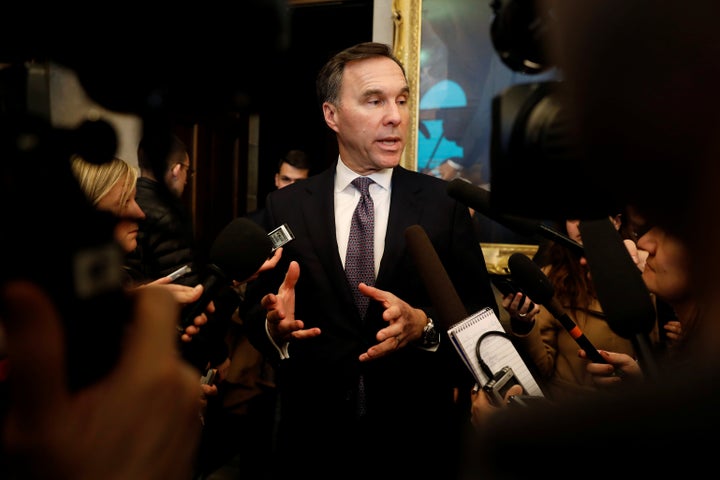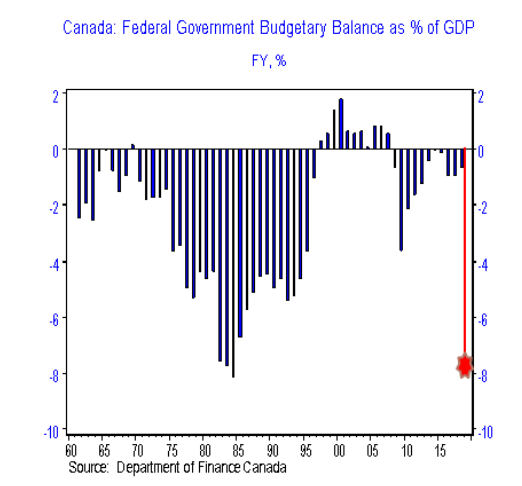
MONTREAL ― Canada’s federal government is headed for a $180-billion deficit this year, economists say ― about seven times larger than the previous year’s deficit. But rock-bottom interest rates for governments mean this massive new IOU will only cost taxpayers around $1 billion a year to service.
Finance Minister Bill Morneau on Wednesday outlined the costs of a new payroll subsidy that will cover up to 75 per cent of wage costs for businesses affected by the COVID-19 outbreak, pegging it at $71 billion for a program that will run retroactively from mid-March to the end of May.
Watch: Canada’s government is asking credit card companies to cut their interest rates.
Together with the spending announced earlier ― including the $2,000-a-month Canada Emergency Response Benefit for those who lost work ― economists at Canada’s big banks now expect the federal deficit to come in at around $170-$180 billion this fiscal year, close to 8 per cent of economic output.
As large as that is, some say it’s not actually large enough.
“A budgetary balance in the order of $200 billion (or approaching 10 per cent of GDP) would not be unreasonable in face of this unprecedented shock,” wrote Rebekah Young, director of fiscal and provincial economics at Scotiabank.
“The risk of responding too slowly or too cheaply would come at the cost of a more protracted recession that would take a much bigger toll on the economy and the government’s finances.”
As a share of the economy, this deficit will be the largest Canada has seen since the early 1980s, Bank of Montreal chief economist Doug Porter noted. He published a chart showing the dizzying pace at which Canada’s deficit has suddenly exploded.

But interest rates in the early 1980s were at record highs, and the government was paying 12-14 per cent on 10-year debt. Today, 10-year Government of Canada debt has a 0.6 per cent interest rate, close to the lowest rate ever.
“At that rate, the deficit would cost just over $1 billion in extra interest costs per year,” Porter wrote in a client note.
“The risk of responding too slowly or too cheaply would come at the cost of a more protracted recession that would take a much bigger toll on the economy...”
- Rebekah Young, Scotiabank
So for $1 billion a year, the government can roll this debt over for the next 10 years ― presumably long enough for the economy to recover, and for government revenues to grow, making this debt easier to pay down the line.
The risk is higher interest rates at some point in the future. If Canada were paying early-1980s interest rates on its debt today, this new deficit would mean an additional $20-$24 billion in interest costs annually ― roughly the same annual cost as the Canada Child Benefit. And that’s just the interest charges, never mind paying it down.
But with low rates, “the massive fiscal policy measures (and huge budget deficits) will carry a relatively light interest cost,” Porter wrote earlier this week. “Longer term, that’s a big relief.”